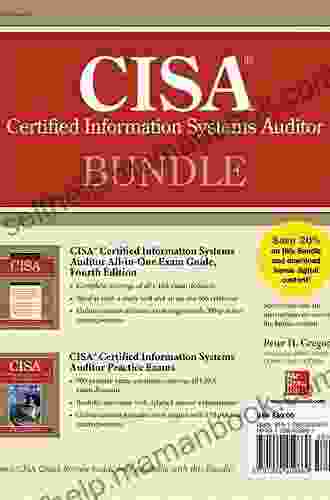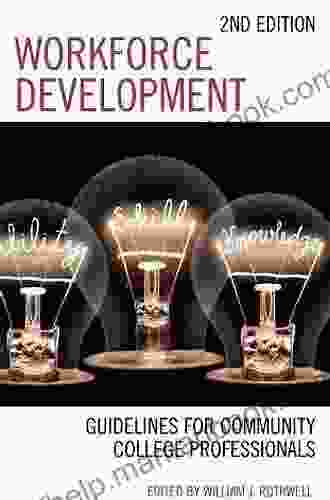Workforce Development Guidelines For Community College Professionals: A Comprehensive Guide

Community colleges play a vital role in workforce development, providing essential training programs that prepare individuals for in-demand jobs and drive economic growth. To ensure the effectiveness of these programs, it is crucial for community college professionals to adhere to comprehensive workforce development guidelines.
4.6 out of 5
| Language | : | English |
| File size | : | 6128 KB |
| Text-to-Speech | : | Enabled |
| Enhanced typesetting | : | Enabled |
| Word Wise | : | Enabled |
| Screen Reader | : | Supported |
| Print length | : | 198 pages |
1. Develop a Workforce Development Strategy
The first step in workforce development is to develop a comprehensive strategy that outlines the goals, objectives, and actions necessary to achieve desired outcomes. This strategy should be based on a thorough analysis of the local labor market, identifying industry trends, skill gaps, and employer needs.
The strategy should include the following elements:
- Mission and vision statement
- Goals and objectives
- Target population
- Program offerings
- Partnerships
- Evaluation and assessment plan
2. Build Strong Partnerships
Collaboration with employers, businesses, and other stakeholders is essential for successful workforce development programs. Community colleges should establish partnerships with:
- Local businesses and industries
- Economic development organizations
- Government agencies
- K-12 school districts
- Nonprofit organizations
Partnerships can provide colleges with valuable insights into industry needs, job market trends, and emerging technologies. They can also help colleges develop tailored training programs that meet the specific requirements of employers.
3. Develop Innovative Program Offerings
Community colleges should offer a range of workforce training programs that meet the diverse needs of learners and employers. These programs can include:
- Certificate programs
- Associate degree programs
- Short-term training courses
- Customized training for businesses
- Apprenticeships
Programs should be designed with input from employers to ensure they are aligned with industry needs and provide learners with the skills and knowledge they need to succeed in the workforce.
4. Use Technology Effectively
Technology can be a powerful tool for workforce development. Community colleges should use technology to:
- Create online and blended learning programs
- Provide access to training resources and materials
- Track student progress and measure outcomes
- Connect with employers and businesses
By leveraging technology, colleges can improve the accessibility, flexibility, and effectiveness of their workforce training programs.
5. Evaluate and Improve Programs
Regular evaluation is crucial for ensuring the effectiveness of workforce development programs. Community colleges should conduct ongoing evaluations to:
- Measure program outcomes
- Identify areas for improvement
- Make data-driven decisions
Evaluation findings can be used to improve the quality of programs, increase student success rates, and meet the changing needs of the workforce.
By adhering to these workforce development guidelines, community college professionals can create effective training programs that prepare individuals for in-demand jobs and drive economic growth. Through collaboration, innovation, and continuous improvement, community colleges can play a critical role in building a skilled and competitive workforce.
4.6 out of 5
| Language | : | English |
| File size | : | 6128 KB |
| Text-to-Speech | : | Enabled |
| Enhanced typesetting | : | Enabled |
| Word Wise | : | Enabled |
| Screen Reader | : | Supported |
| Print length | : | 198 pages |
Do you want to contribute by writing guest posts on this blog?
Please contact us and send us a resume of previous articles that you have written.
 Top Book
Top Book Novel
Novel Fiction
Fiction Nonfiction
Nonfiction Literature
Literature Paperback
Paperback Hardcover
Hardcover E-book
E-book Audiobook
Audiobook Bestseller
Bestseller Classic
Classic Mystery
Mystery Thriller
Thriller Romance
Romance Fantasy
Fantasy Science Fiction
Science Fiction Biography
Biography Memoir
Memoir Autobiography
Autobiography Poetry
Poetry Drama
Drama Historical Fiction
Historical Fiction Self-help
Self-help Young Adult
Young Adult Childrens Books
Childrens Books Graphic Novel
Graphic Novel Anthology
Anthology Series
Series Encyclopedia
Encyclopedia Reference
Reference Guidebook
Guidebook Textbook
Textbook Workbook
Workbook Journal
Journal Diary
Diary Manuscript
Manuscript Folio
Folio Pulp Fiction
Pulp Fiction Short Stories
Short Stories Fairy Tales
Fairy Tales Fables
Fables Mythology
Mythology Philosophy
Philosophy Religion
Religion Spirituality
Spirituality Essays
Essays Critique
Critique Commentary
Commentary Glossary
Glossary Bibliography
Bibliography Index
Index Table of Contents
Table of Contents Preface
Preface Introduction
Introduction Foreword
Foreword Afterword
Afterword Appendices
Appendices Annotations
Annotations Footnotes
Footnotes Epilogue
Epilogue Prologue
Prologue Steven Kotler
Steven Kotler Susanne Hope
Susanne Hope Patrick Smith
Patrick Smith Arthur Bradley
Arthur Bradley Astrid Avero
Astrid Avero Amba Gale
Amba Gale Antonio Robinhood
Antonio Robinhood Cat Webling
Cat Webling Georg Ebers
Georg Ebers Arthur Rackham
Arthur Rackham Richard Selzer
Richard Selzer Kevan Billington
Kevan Billington M L Martin
M L Martin Susan Hall
Susan Hall Yogesh Chandra
Yogesh Chandra Amanda Rigby
Amanda Rigby James W Loewen
James W Loewen Y S Hassan
Y S Hassan Caroline Linden
Caroline Linden Brant Hansen
Brant Hansen
Light bulbAdvertise smarter! Our strategic ad space ensures maximum exposure. Reserve your spot today!

 Anthony BurgessUnleash Your Creativity: A Comprehensive Guide to Dragon Crochet Amigurumi...
Anthony BurgessUnleash Your Creativity: A Comprehensive Guide to Dragon Crochet Amigurumi... Gabriel MistralFollow ·6.4k
Gabriel MistralFollow ·6.4k Dan HendersonFollow ·17.9k
Dan HendersonFollow ·17.9k Jackson BlairFollow ·14.5k
Jackson BlairFollow ·14.5k Colin RichardsonFollow ·17.3k
Colin RichardsonFollow ·17.3k Brody PowellFollow ·12.6k
Brody PowellFollow ·12.6k Yasushi InoueFollow ·14.7k
Yasushi InoueFollow ·14.7k Ernest PowellFollow ·12.7k
Ernest PowellFollow ·12.7k Raymond ParkerFollow ·18.7k
Raymond ParkerFollow ·18.7k

 Boris Pasternak
Boris PasternakThe Misted Mirror: Mindfulness for Schools and...
What is The Misted...

 Holden Bell
Holden BellEmbark on Thrilling Adventures in the Uncharted Depths of...
Unveiling the Enchanting...

 Seth Hayes
Seth HayesDelphi Complete Works of Lucan: Illustrated Delphi...
This meticulously edited...

 Jackson Hayes
Jackson HayesThe Enigmatic Cat Burglar: Unraveling the Intriguing...
In the annals of crime, the name Bernie...

 Quentin Powell
Quentin PowellAligned With The Cisa Review Manual 2024 To Help You...
The CISA Review Manual 2024 is the most...

 Austin Ford
Austin FordUnlocking Revenue Potential: A Comprehensive Business...
In today's digital...
4.6 out of 5
| Language | : | English |
| File size | : | 6128 KB |
| Text-to-Speech | : | Enabled |
| Enhanced typesetting | : | Enabled |
| Word Wise | : | Enabled |
| Screen Reader | : | Supported |
| Print length | : | 198 pages |










